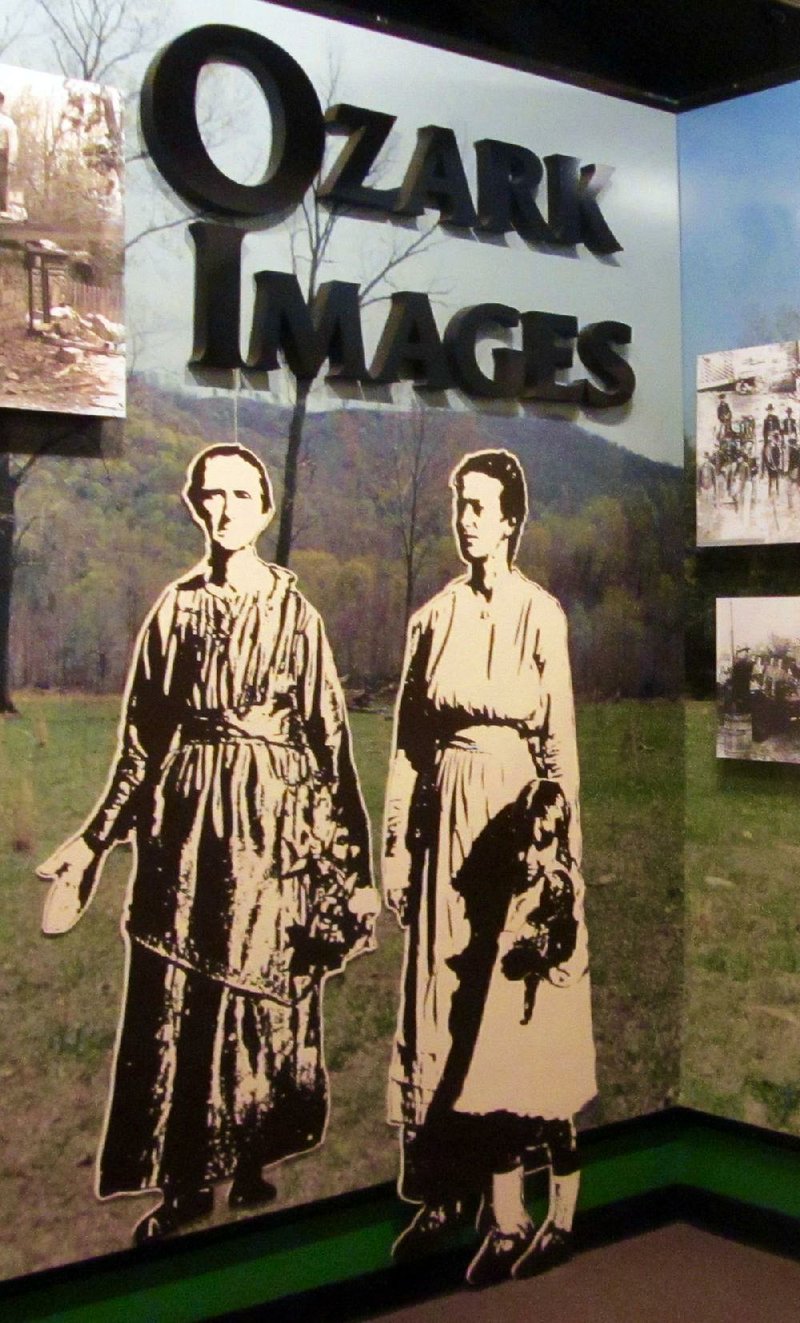SPRINGDALE -- There's an aura to the word "Ozarks" that wraps the hilliest part of Arkansas in a mist of lore and legend. That mystique is explored with tender loving care at the indoor-outdoor Shiloh Museum of Ozark History in Springdale.
As a display panel points out, "Ask two different people, and you'll probably get two different answers" as to where the Ozarks are. The region extends to southern Missouri as well as bits of Oklahoma and Kansas. But its cultural heart beats in northern Arkansas.
Geologically, the panel's text explains, the Ozarks "are not really mountains, but a series of plateaus that have been carved into mountainous terrain by erosion. Author Carl Sandburg described the region as 'a place where the hills don't get any higher, but the hollows get deeper and deeper.'"
Exhibits make clear that life in the Ozarks has traditionally been hardscrabble. A posted quote evokes the hilly landscape that challenged farmers: "When a feller owns a forty [acre plot] in Newton County, he farms the top and all four sides."
The mountains, though minuscule compared to the Rockies or Alps, "isolated many of these settlers, and their resilience, hard work and a wry sense of humor produced distinct 'hillbilly' folkways." In recent years, "the region has experienced rapid and diverse economic growth, and thousands of new 'settlers' have moved here to work and retire. They are now a part of the ever-changing story of the Ozark country and its culture."
But there persists the "unflattering image of the Ozark mountaineer," which "began early in the 19th century. To start with, the Ozarks suffered from a general perception of Arkansas as a backwoods and violent frontier.
"Add to that the 'Arkansas Traveler' tune, featuring a rough and lazy Arkansas squatter, which became wildly popular across the United States in the 1840s and '50s. Then in the early 20th century came millions of copies of Thomas W. Jackson's On a Slow Train Through Arkansas, which was full of crude jokes about the hopelessly naive hillbilly.
"Radio comedians Lum 'n' Abner and Bob Burns, cartoonist Al Capp, and television programs like The Beverly Hillbillies all poked fun at the Ozarkers and kept the negative image alive. And souvenir shops reinforced it with hillbilly postcards and curios."
Shiloh Museum of Ozark History dispenses an invigorating antidote to such stereotypes. Displays focus on such topics as the rich musical tradition of the area, the distinctive crafts such as the Gibson basket, and the phenomenal development of the poultry industry in recent decades. Many of the signs are posted in Spanish as well as English.
A new exhibit highlights the traditional celebrations of the sizable Marshall Islands community that has settled in Northwest Arkansas, as well as the evolution of those festivities in the Ozarks. The exhibit was created by Rona Masha as a Girl Scout project.
The museum's wooded 2-acre grounds contain six vintage buildings moved here from elsewhere in Washington County, four of them built in the 19th century. They are a barn, a general store, a doctor's office, a log cabin, a Baptist preacher's home and an outhouse. The outhouse is carved with a crescent moon (female symbol) and a star (male symbol). It was a unisex facility in the good old days.
Shiloh Museum of Ozark History, 118 W. Johnson Ave., Springdale, is open 10 a.m.-5 p.m. Monday-Saturday. Admission is free, with donations welcome. Call (479) 750-8165 or visit shilohmuseum.org.
Weekend on 09/08/2016
